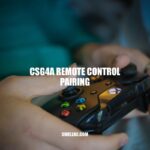RC EDF Jets: An Introduction and Overview
Electric Ducted Fan (EDF) jets are high-performance scale model aircraft that are becoming increasingly popular among radio-controlled (RC) hobbyists. These small, yet powerful aircraft are modeled after military or civilian planes, offering an exciting experience for pilots who enjoy flying and building RC planes. EDF jets are perfect for those who want a fast, dependable, and efficient aircraft that provides excellent maneuverability and can perform complex aerobatics. With their sleek designs, powerful electric ducted fan engines, and advanced electronics, RC EDF jets provide an immersive and thrilling flying experience for both novices and experienced pilots alike.
RC EDF jets are electric-powered models of real-life military or civilian aircraft, fashioned with intricate designs and attention to detail. They use an electric ducted fan as their propulsion system, which consists of a fan unit, a dedicated motor, and an electronic speed controller. Below are some key features that make RC EDF jets so attractive to hobbyists:
- Size: RC EDF jets come in different sizes, from small scale models to larger versions.
- Speed: Thanks to their ducted fan system, RC EDF jets have excellent speed capabilities that can range from 70 to over 100 mph depending on the aircraft’s design and power system.
- Maneuverability: EDF jets have a unique design that provides excellent stability and maneuverability, making them some of the best-suited models for performing aerobatics and stunts.
- Efficiency: Because they are electric-powered, RC EDF jets are environmentally friendly and offer significant benefits like low maintenance costs, smooth & quiet operation, and low operational costs.
Some popular websites and brands for enthusiasts of RC EDF jets include Horizon Hobby, RC Jets World, Motion RC, and Flex Innovations.
How do EDF Jets Work?
EDF (Electric Ducted Fan) jets are a popular choice among hobbyists and enthusiasts due to their impressive speed and agility. Here’s a brief overview of how they work:
- EDF jets are powered by a brushless electric motor that spins a multi-bladed impeller within a ducted fan.
- The impeller draws air into the duct and increases its velocity, creating thrust for the jet.
- EDF jets are quieter and more efficient than their gas-powered counterparts, making them a popular choice for indoor flying and other low-noise environments.
- Some popular EDF jet brands include Freewing, E-flite, and FMS.
If you’re interested in purchasing an EDF jet, be sure to do your research and find a reputable dealer or website that specializes in RC aircraft.
RC EDF jets work similarly to their full-size counterparts, except that they use an electric motor instead of a gas or combustion engine to power the ducted fan. Here are the primary components and how they work together:
Component Description
- Fan unit: A plastic or composite unit that contains a small fan with multiple blades that spin around the circumference to create thrust.
- Motor: An electric motor that allows the fan to rotate at high speeds. The motor gets its power from a lithium polymer (Li-Po) battery connected using a speed controller.
- Electronic Speed Controller (ESC): A device that regulates the amount of power that goes to the motor when the pilot gives throttle commands. It converts the DC signal from the radio receiver into a pulse-width modulated (PWM) signal that the motor can understand.
- Lithium Polymer (Li-Po) battery: A high-capacity battery that provides the power to the motor for up to 10-15 minutes of flight time on average before recharging.
Some interesting facts about RC EDF jets include:
- The first EDF plane was developed in Germany in the 1940s but was not successful until the technology was refined in the 2000s.
- The ducted fan design provides RC EDF jets with a quieter and more efficient propulsion system, making them popular in residential neighborhoods and flight fields close to neighborhoods.
- A beginner EDF jet can cost between $150-$300 for a 64mm fan unit, while the more advanced models with larger fans can cost up to $1000 or more for a customized setup.
Additionally, Motion RC and HobbyKing have extensive collections of EDF jet models and parts, including electric motor parts and fan blades.
How does an EDF engine work?
An EDF (Electric Ducted Fan) engine is an electric motor that powers a fan to create propulsion for a model airplane or drone. Here’s how it works:
- Electricity powers the motor, which turns the fan blades inside the duct.
- The fan blades draw in air from the front of the duct and accelerate it through the back.
- The accelerated air creates a thrust that propels the airplane forward.
EDF engines are popular among hobbyists and professional pilots because they are quieter and more efficient than traditional gas-powered engines. They also create a more streamlined design for the aircraft, making it more aerodynamic.
If you’re interested in learning more about EDF engines, check out the websites of popular brands like Spektrum, Horizon Hobby, and E-flite. They offer a range of products and resources for enthusiasts of all skill levels.
Types of RC EDF jets
There are numerous types of RC EDF jets that come in different sizes, configurations, and features. Here are some popular types of RC EDF jets:
EDF trainers
- Designed for beginners and those just starting in RC EDF jets.
- Typically cost less, have smaller fan units and do not require a lot of power.
- These planes are more stable and easier to fly, allowing beginners to hone their skills.
- Popular models include Dynam Meteor and RocHobby V-Tail.
EDF sport planes
- Built for more experienced pilots.
- Faster, more maneuverable, and more aerobatic than EDF trainers.
- Typically possess larger fan units requiring more power and expertise to fly.
- Popular models include the Freewing F-4 Phantom and F-16 V2.
EDF scale models
- Designed to look and perform like real-life aircraft.
- Include bomber and fighter scale models from different eras of aviation, including World War II and modern military aircraft.
- Highly-detailed with realistic markings and decals, many can feature retractable landing gear, functioning canopies, lights and more.
- Popular models include the Freewing F-14 Tomcat and F-15 Eagle, as well as the Taft Hobby Viper Jet and A-10 Thunderbolt II.
Overall, there are many types of RC EDF jets available for anyone interested in the hobby. Motion RC and HobbyKing carry a broad range of models, parts and accessories suited for both beginners and experienced pilots.
What are the different types of RC jet engines?
RC jet engines come in several types. Here are the most common ones:
- Turbine engines: These are the largest, most-powerful, and most-expensive engines you can buy. They run on kerosene, are very noisy, and produce an intense amount of power.
- Ducted-fan engines: These are smaller, less-powerful, more-affordable alternatives to turbine engines. They run on electricity and are much quieter.
- Pulse-jet engines: These are the simplest, least-powerful, and cheapest engines you can buy. They operate by pulsing fuel through a combustion chamber.
- Rocket engines: These are the most exotic engines and are not legally allowed in most countries. They use a mix of chemicals to produce thrust.
If you’re interested in purchasing an RC jet engine, consider visiting websites like MotionRC and HorizonHobby.com for popular options.
Building an RC EDF jet
Building an RC EDF jet requires a certain level of skill, patience, and attention to detail. Here are some essential steps to guide you in building your RC EDF jet:
Step 1: Selecting a model
- Research different models online and determine which one best fits your skill level and budget.
- Motion RC and HobbyKing are excellent resources for finding models of all types and sizes.
- Read reviews from other builders and watch online videos to get an idea of the assembly process and common issues that may arise.
Step 2: Gathering the necessary components
| Component | Essential? | Brands |
|---|---|---|
| EDF Unit & Motor | Yes | Changesun, EMAX, Tomcat |
| Battery & Charger | Yes | Zippy, Turnigy, Venom |
| Receiver & Transmitter | Yes | FlySky, Spektrum, Futaba |
| Servo(s) | Yes | Hitec, Spektrum, Savox |
| Electronic Speed Controller (ESC) | Yes | HobbyWing, Castle Creations, Thunderbird |
| Install Tools | Yes | HobbyKing, Dynamite, Dubro |
| Adhesive & Glues | Yes | Plastruct, UHU, Gorilla Glue |
| Optional Parts – Landing gear, lighting and functional features | No | Available from many sources like AeroSky, Flyzone, Parkzone |
Step 3: Assembling the plane
- Read and follow the manufacturer’s instructions carefully.
- Be patient and take your time during the build, especially with complex steps.
- Pay close attention to wiring and ensure proper connections to avoid electrical issues.
- Ensure structural integrity by checking joints and seams before and after application of glues.
Motion RC and HobbyKing have comprehensive guides, videos and tutorials available for building RC EDF jets. Taking it slow, asking for help and advice in online RC forums like RCGroups, and being meticulous with the build process will ensure hours of flying enjoyment and a beautiful finished model that you can be proud of.
Can you build your own RC plane?
Yes, you can build your own RC plane! There are many resources online that can guide you through the process and provide step-by-step instructions. Here are some tips to get you started:
- Choose a plan or kit that suits your skills and experience.
- Gather all the necessary materials and tools.
- Follow the instructions carefully and take your time.
- Join a community or forum for support and advice.
For those looking for a complete kit, popular options include the Flite Test and HobbyKing websites. These websites offer a variety of RC plane kits for all levels of experience.
Flying an RC EDF jet
Flying an RC EDF jet can be both thrilling and challenging. Here are some key things to keep in mind:
Pre-flight checks
- Check and double-check the battery connections and ensure that the power supply is working correctly.
- Check the condition of the plane before and after every flight, paying particular attention to the structural integrity of the wings and other components.
- Check and make sure that the transmitters and receiver are paired up and tested if they work correctly.
- Ensure that the RC EDF jet is not too heavy and is flying with the recommended C.G. (Center of Gravity) as specified in the manufacturer’s instructions.
Tips for takeoff
- Make sure the runway or flight path is free of any obstructions or obstacles.
- Gradually increase the throttle to gain speed, and then smoothly pull up the nose to lift the aircraft off the ground.
- Keep the plane in a steady climb to gain altitude and maintain control.
Navigating and landing
- Practice flying maneuvers and turns at a safe altitude to get comfortable with the controls.
- Keep an eye on the battery power and monitor the flight time to ensure you do not run out of power when in the air.
- Minimize (near zero) throttle on the final approach to land the plane smoothly.
- Avoid coming down too fast and landing abruptly, as this could damage the plane or cause it to tip over.
RCGroups.com, Flitetest and YouTube have videos and tutorials that provide valuable insights, tips, and tricks for flying RC EDF jets. Remember to always prioritize safety, the condition of the components and never fly out of your level of comfort and skill. Happy flying!
Conclusion
RC EDF jets are a fantastic way to get into the world of remote-controlled aircraft, providing hours of fun and entertainment. Whether you are an experienced pilot or a newcomer to the hobby, there is an EDF jet model to suit your interests, abilities and budget.
In this article, we have covered the basics of RC EDF jets, including their definition, how they work, the different types of planes available and the building and flying process. We have also provided some tips to help get you started and suggested some resources to assist with your learning and enjoyment.
Remember to always prioritize safety throughout the entire process of building, operating, and flying your RC EDF jets. Respect the rules and regulations around remote-controlled aircraft, and always be aware of your surroundings and nearby aircraft.
With proper care and maintenance, your RC EDF jet can provide endless hours of fun and enjoyment for years to come. So, take your time, enjoy the experience, and fly safe!



